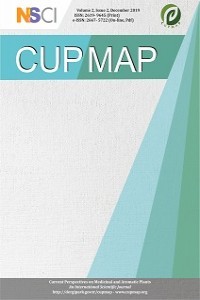International Standards of Microbiological Quality in Cosmetic Products
International Standards of Microbiological Quality in Cosmetic Products
___
- 1. Republic Turkey Ministry of Health. Turkish Medicines And Medical Devices Agency Cosmetic Law, 2005, No, 25823.
- 2. Republic Turkey Ministry of Health. Turkish Medicines And Medical Devices Agency, Guidance on Microbiological Control of Cosmetic Products Version 1.0.
- 3. ISO 17516, Cosmetic microbiology microbiological limits, 2014.
- 4. ISO 21149, Cosmetic microbiology enumeration and detection of aerobic mesophilic bacteria, 2006.
- 5. ISO 16212, Cosmetic microbiology enumeration of yeast and mould, 2008.
- 6. ISO 21150, Cosmetic microbiology detection of Escherichia coli, 2006.
- 7. ISO 22717, Cosmetic microbiology detection of Pseudomonas aeruginosa, 2006.
- 8. ISO 22718, Cosmetic microbiology detection of Staphylococcus aureus, 2006.
- 9. ISO 18416, Cosmetic microbiology detection of Candida albicans, 2007.
- 10. European Pharmacopoeia 9.0, 2.6.12. Microbiological exaimination of non-sterile products: microbial enumeration tests, 2017.
- 11. European Pharmacopoeia 9.0, 2.6.13. Microbiological exaimination of non-sterile products: Test for specified micro-organisms, 2017.
- ISSN: 2619-9645
- Yayın Aralığı: Yılda 2 Sayı
- Başlangıç: 2018
- Yayıncı: Nazım ŞEKEROĞLU
Studies on Natural Cosmetic R & D – From Laboratory to Prototype Product
İlkay ERDOĞAN ORHAN, Fatma Sezer ŞENOL DENİZ
Detection and Quantification of Preservatives in Green Cosmetics
Evren ALGIN YAPAR, Nilay CİVİL, Ebru ÜNCÜOĞLU
Tea Tree Oil and Its Use in Aromatherapy
Ufuk ÇALIŞKAN, Müjgan ÖZFENERCİ
Volatile and Phenolic Compositions of the Leaves of Two Vinca L. Species from Turkey
Ela Nur ŞİMŞEK SEZER, Tuna UYSAL
Microbiological Property Evaluation of Natural Essential Oils Used in Green Cosmetic Industry
Ecem ÖZDEMİR, İsmail ASLAN, Bekir ÇAKICI, Betül TÜRKER, Cem Emre ÇELİK
The Potential of Marine Resources in Cosmetics
Levent ALPARSLAN, Nazım ŞEKEROĞLU, Anake KIJJOA
Gökhan CENGİZ, Evren ALGIN YAPAR
International Standards of Microbiological Quality in Cosmetic Products
